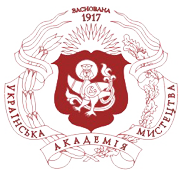INTEGRATION OF PHOTOGRAMMETRY AND LIDAR TECHNOLOGIES IN THE ARCHITECTURAL EDUCATION SYSTEM OF UKRAINE: CHALLENGES AND PROSPECTS
DOI:
https://doi.org/10.32782/2411-3034-2025-37-8Keywords:
photogrammetry, LiDAR technologies, 3D-scanning, system of architectural education of Ukraine, protection of cultural heritage, restorationAbstract
The purpose of this study is to study the possibilities of introducing photogrammetry and LiDAR technologies into the architectural education system of Ukraine. The main attention is paid to the practical experience of using these technologies during the summer training of 2024 and determining the prospects of their integration into the educational process to expand the professional competencies of architectural students. Methods. Several approaches were used to achieve the goal: practical experience: summer training in photogrammetry and 3D-scanning, which allowed to assess the effectiveness of technologies in real conditions; analysis of advantages: determination of key aspects of the use of photogrammetry and LiDAR in architectural activity; an overview of the educational context: researching the current opportunities for the implementation of digital innovations in the educational programs of the faculties of architecture. Research results. Participation in the training revealed the significant potential of photogrammetry and LiDAR for architectural education. Students demonstrated a high level of interest and highlighted several advantages: 1) ease of integration with modern software tools; 2) the ability to generate accurate three-dimensional models of architectural objects; 3) facilitation of documentation and restoration of historical structures. Particularly relevant is the application of these technologies in the field of cultural heritage preservation, where precision, delicacy, and reversibility of interventions are critically important. Practical exercises showed that mastering these technologies does not require extensive prior experience, while the effectiveness of learning significantly increases through visualization and hands-on tasks. Conclusions. The use of photogrammetry and LiDAR in the educational process can serve as an effective tool for developing students’ professional skills. Based on the positive outcomes of the training, it is recommended to: develop specialized courses or modules dedicated to these technologies; integrate practical exercises in photogrammetry and 3D-scanning into academic programs; and expand the technical infrastructure of faculties to ensure access to modern equipment. Special attention should be given to the application of these technologies in the field of restoration: accurate digital models support detailed analysis of the condition of historical structures, enable the documentation of losses, facilitate the planning of well-grounded interventions, and help preserve digital records for future generations. Implementing these measures will contribute to improving the quality of architectural education in Ukraine and its alignment with contemporary industry demands.
References
Базелюк О. Особливості цифровізації вищої освіти в сучасних умовах. Педагогічні інновації: ідеї, реалії, перспективи. 2021. № 2(27). С. 37–43. URL: https://pi.iod.gov.ua/images/pdf/2021_2/5.pdf (дата звернення: 05.12.2024).
Parsinejad H., Choi I., Yari M. Production of Iranian Architectural Assets for Representation in Museums: Theme of Museum-Based Digital Twin. Body, Space & Technology. 2021. № 20. P. 61–74. DOI: https://doi.org/10.16995/bst.364 (дата звернення 05.11.2024)
A Survey of Augmented, Virtual, and Mixed Reality for Cultural Heritage / Bekele M., Pierdicca R., Frontoni E., Malinverni E.S. Journal on Computing and Cultural Heritage (JOCCH). 2018. № 11. P. 1–36. DOI: http://dx.doi.org/10.1145/3145534 (дата звернення 07.12.2024)
ScanХ. Що таке лазерне сканування та його принципи!. URL: https://scanx.com.ua/article/10_2022/10.html (дата звернення: 05.12.2024).
ACC media agenci. Що таке 3D-сканер і як він працює? Агенство АСС. URL: https://acc.cv.ua/news/storystorynka/print-service/scho-take-3d-skaner-i-yak-vin-pracyue-64697. (дата звернення: 15.12.2024)
Через російську агресію в Україні постраждали 872 пам’ятки культурної спадщини. Міністерство культури та стратегічних комунікацій. URL: https://mcsc.gov.ua/news/cherez-rosijsku-agresiyuv-ukrayini-postrazhdaly-872-pamyatky-kulturnoyi-spadshhyny/ (дата звернення: 03.12.2024)
Безкоштовний навчальний курс для викладачів/-ок та аспірантів/-ок зі збереження спадщини. ХША. URL: https://kharkiv.school/courses/bezkoshtovnyj-navchalnyj-kurs-dlya-vykladachiv-ok-taaspirantiv-ok-zi-zberezhennya-spadshhyny/ (дата звернення 10.01.2025)
Українська урбаністична платформа та Управління охорони історичного середовища Львова за підтримки Львівського культурного хабу та UNESCO. Спадок: воркшоп із захисту культурної спадщини. 2025. URL: https://gastroli.ua/events/lviv-urban-forum (дата звернення 15.10.2024).
Реформа освіти та науки. Кабінет Міністрів України. URL: https://www.kmu.gov.ua/reformi/rozvitok-lyudskogo-kapitalu/reforma-osviti (дата звернення 15.11.2024).
Рожко В. Василь Рожко: «Тустань – моя колиска цифровізації». Як фортеця стала порятунком для української спадщини під час війни : інтерв’ю / спілкувалися О. Бодняк, І. Середа. The Ukrainians. URL: https://theukrainians.org/vasyl-rozhko/ (дата звернення: 07.01.2025)
Ukrainian Cultural Foundation starts accepting applications for the «Cultural Heritage» grant program. Український культурний фонд. URL: https://ucf.in.ua/news/17012023 (дата звернення: 30.12.2024).
Гривняк А. Що таке фотограмметрія, як вона допомагає зберегти українську спадщину і чим корисна для геймдеву. GameDev DOU. URL: https://gamedev.dou.ua/blogs/skeiron-developerabout-photogrammetry/ (дата звернення: 14.01.2025)
Kallas J. Emergency Response. First-Aid to Cultural Heritage and Post-Disaster Heritage Sites Documentation. SESSION 01. Beirut Case Study : [presentation]. Kyiv. 2024. 63 s.
Cantor P. Visual inspection for damage buildings. Kyiv. 2024. 36 c.
Олійник Г. Інноваційні підходи проведення архітектурних практик. досвід факультету архітектури НАОМА. Вісник Національної академії образотворчого мистецтва і архітектури. 2024. № 1. С. 23–28. URL: https://journals.naoma.kyiv.ua/index.php/bulletin/issue/view/20/20 (дата звернення: 19.01.2025).
Revenko S. UNESCO-ICCROM field exercise on the use of post-event on-site damage and risk assessment methodology and International Form for immovable cultural property in Ukraine 12–13 August : [presentation]. Kyiv, 2024.
Kallas J. UNESCO-ICCROM field exercise on the use of post-event on-site damage and risk assessment methodology and International Form for immovable cultural property in Ukraine 12–13 August 2024 : [presentation]. Kyiv, 2024.
Cantor P. Visual inspection for damage buildings : [presentation]. [Kyiv, 2024].





